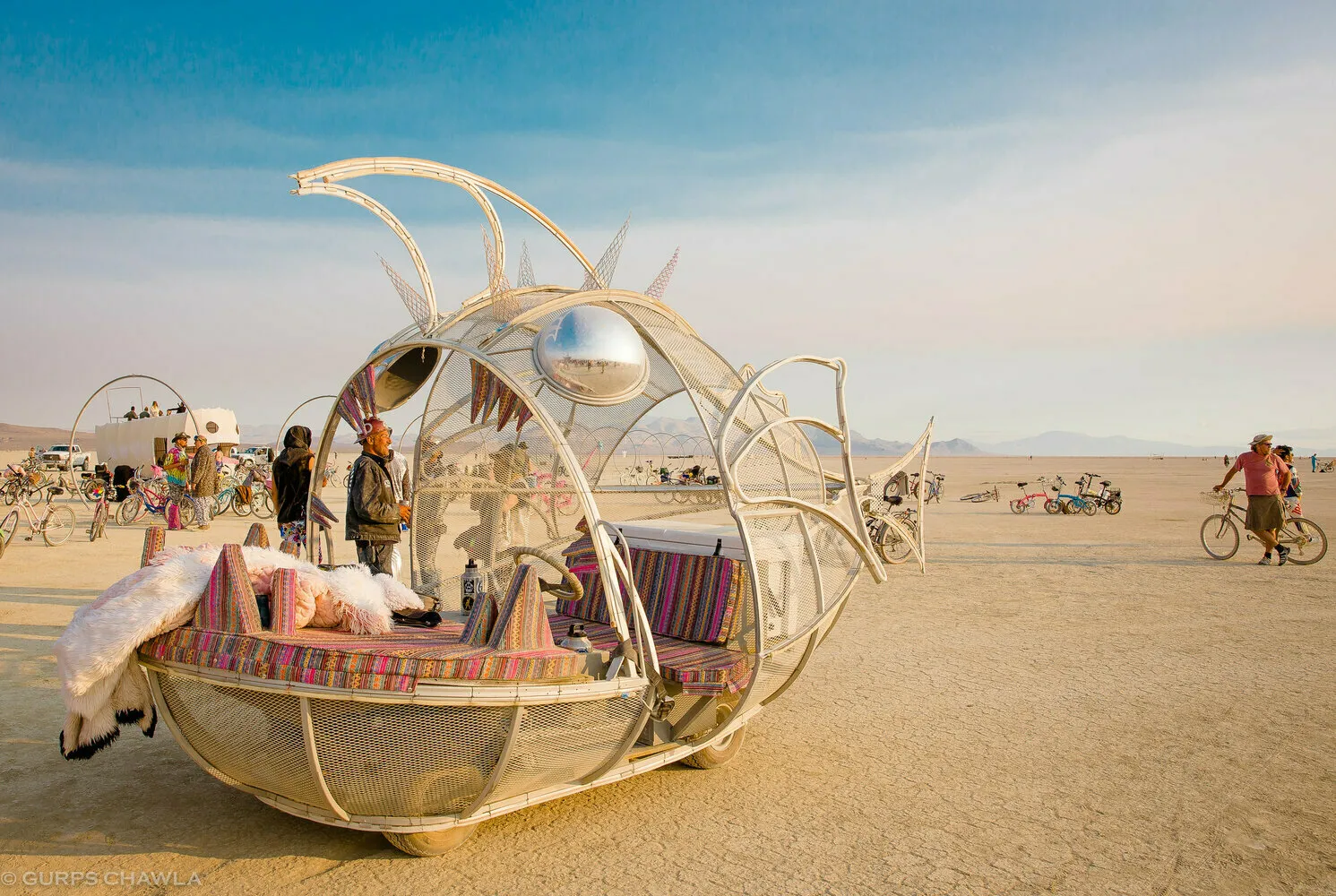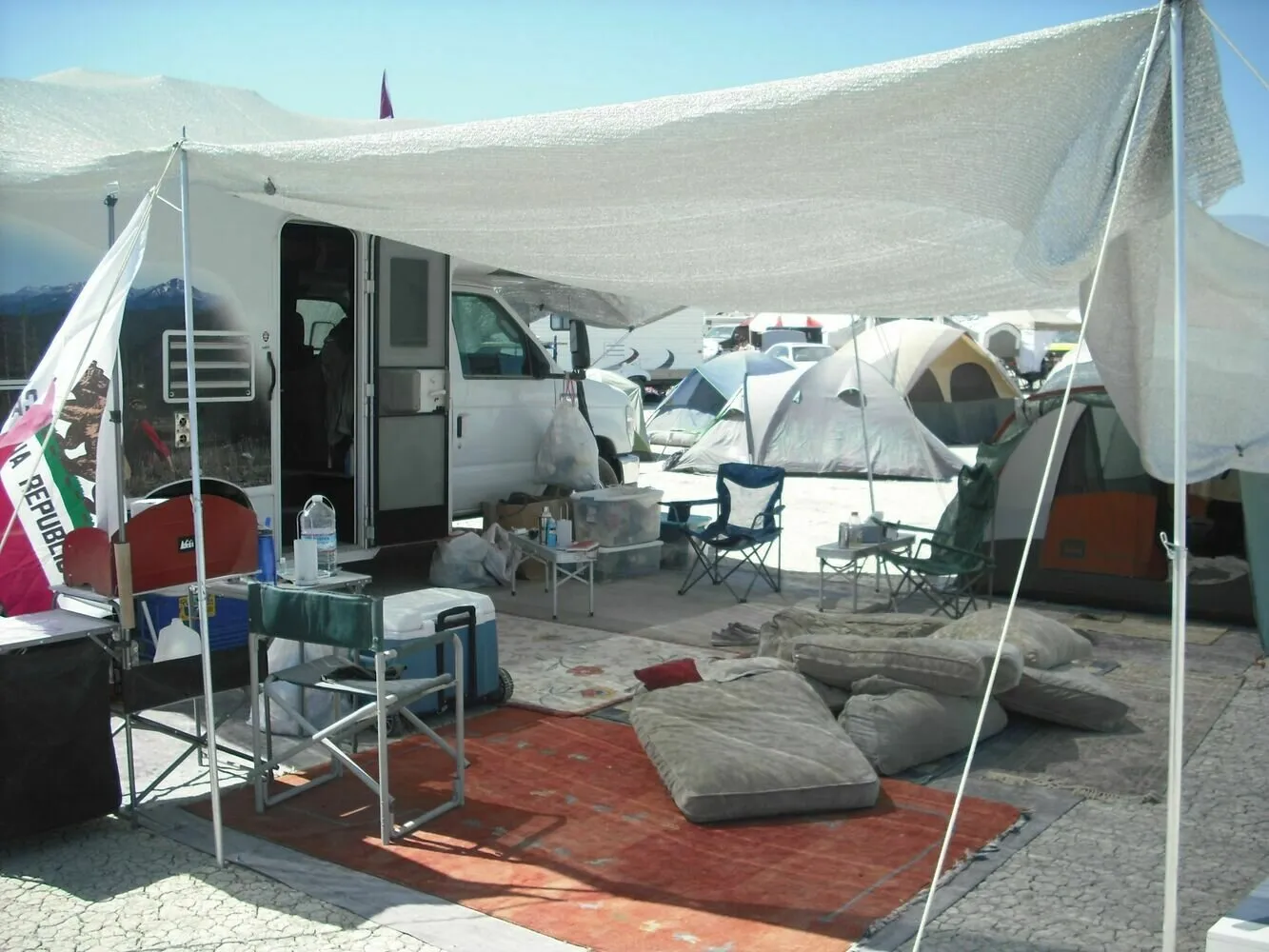There can be your advertisement
300x150
Burning Man: Why Thousands of People Go to Burn a Human Figure in the Desert
A unique festival where thousands gather in the desert to pay homage to art, self-expression, and community
Recently concluded the latest Burning Man 2024 festival, which took place from August 25 to September 2. As usual, it brought tens of thousands of participants from all over the world to the Black Rock Desert, Nevada. Despite the dust not yet settling, many are already thinking about next year.
Ticket sales for Burning Man 2025 will most likely begin at the start of 2025. Exact dates are not yet announced, but usually, lottery registration opens at the end of January - beginning of February. Updates can be followed on the festival's official website.
Every year, thousands of people come to the Black Rock Desert in Nevada to create a temporary city filled with art, music and... burning a large wooden human figure. This is Burning Man — a festival that everyone talks about: from hippies to Silicon Valley billionaires. Let's find out what this event is and why it has become cult.
Main points from the article:
- Burning Man is an annual festival in the desert of Nevada, USA;
- Participants create a temporary city and live there for a week;
- The climax of the festival is the burning of a large wooden human figure;
- The festival is based on principles of self-expression, community and 'leaving no trace';
- Tickets cost from $475 to $1400 and are distributed through a lottery system;
- The festival has its own economy based on giving.
How it all started: from the beach to the desert
The story of Burning Man began in 1986 on Baker Beach in San Francisco. Larry Harvey and his friend Jerry James decided to burn a small wooden human figure. This attracted attention from passersby, and the following year they repeated the act, making the figure larger.
By 1990, the event had become so popular that local authorities banned it from being held on the beach. The organizers then moved the festival to the Black Rock Desert in Nevada, where it has been held ever since.
Where it happens: a city that doesn't exist on maps
Burning Man takes place in the Black Rock Desert, about 150 km north of Reno, Nevada. During the festival, a temporary city called Black Rock City emerges, which becomes one of the largest populated areas in the state.
The city has a horseshoe shape, with the enormous human figure at its center—the main symbol of the festival. Surrounding it are themed camps, art installations and performance venues.
 Photo: pinterest.com
Photo: pinterest.comHow it works: a moneyless city
One of the unique features of Burning Man is its economy based on giving. Money is forbidden at the festival (except for buying ice and coffee). Instead, participants bring gifts and share them with others.
This can be anything: from food and drinks to yoga lessons or massage. The idea is that everyone contributes to the common good without expecting anything in return.
10 Principles: The Burning Man Code
Burning Man is based on 10 principles formulated by Larry Harvey in 2004:
- Radical Acceptance;
- Giving;
- Decommodification (rejection of commercialization);
- Radical Self-Reliance;
- Radical Self-Expression;
- Community Effort;
- Civic Responsibility;
- Leaving No Trace;
- Participation;
- Now.
These principles define the atmosphere and culture of the festival.
How to get there: lottery and queues
It's not easy to get into Burning Man. Tickets are distributed through a lottery system held at the beginning of the year. Prices for tickets in 2023 varied from $475 to $1400.
In addition, there is a 'cultural ticket' program for artists and volunteers. There is also a transfer system for those who were unable to use their ticket.
How they live there: from tents to luxury camps
Living conditions at Burning Man can vary greatly. Most participants live in tents or RVs they bring with them. There are also more comfortable options: some camps offer air-conditioned yurts or even luxurious 'glamping' setups.
Participants must bring everything necessary for life in the desert: water, food, clothing, sun and dust protection. Temperatures during the day can reach +40°C, and at night drop to +5°C.
 Photo: pinterest.com
Photo: pinterest.comWhat they do there: art, music and self-discovery
The Burning Man program is extremely diverse. Some activities include:
- Art installation tours: every year hundreds of artworks are presented at the festival, many of which are interactive.
- Themed camps: each camp offers something unique—from dance lessons to scientific lectures.
- Participation in rituals: apart from burning the 'Human,' there are other ceremonies, such as the 'Temple,' where people leave messages to deceased loved ones.
- Parties and concerts: music plays an important role at the festival, although there are no official headliners.
Russian presence: from artists to oligarchs
Russians also participate actively in Burning Man. For example, in 2017, the festival featured the installation 'Pulsar' by Russian artist Sergey Titov—a large glowing sphere that responds to touch.
It is also known that some Russian businessmen and celebrities have attended the festival. For example, Pavel Durov, founder of 'VKontakte,' has been to Burning Man multiple times.
Myths and legends: what people say about Burning Man
There are many rumors and legends surrounding the festival. Here are some of the most common misconceptions:
- "This event is only for the rich." Despite the presence of some wealthy individuals, most participants are ordinary middle-class people. The festival aims to be accessible to everyone who shares its values.
- "There are no rules there." In fact, Burning Man has a clear code of conduct based on its 10 principles. Safety and respect for other participants are key priorities for organizers.
- "It's just a big party." Although there are indeed many entertainments at the festival, its main goal is to create a temporary community based on art, self-expression, and mutual aid.
- "Everyone burns their stuff at the end." This is not true. The principle of 'leaving no trace' means that participants must clean up after themselves and remove all trash. Only specially prepared art objects are burned.
These myths often arise from a misunderstanding of Burning Man's philosophy and culture. In reality, the festival is a complex and multifaceted event, which each participant experiences differently.
How it all ends: cleanup and return
After the festival concludes, a large-scale cleanup begins. The principle of 'leaving no trace' requires that the desert remain in the same state as it was before the festival. A team of volunteers carefully cleans the area, collecting even the smallest pieces of trash.
Many participants note that returning to the 'normal world' after Burning Man can be difficult. Some experience what is known as 'post-play depression'—a feeling of longing for the festival atmosphere.
Burning Man is not just a festival, but a whole culture and lifestyle. For many, participation in it becomes an annual tradition and a source of inspiration. Despite criticism and debates, Burning Man continues to attract thousands of people from around the world who want to spend a week immersed in the world of art, self-expression, and community.
Cover: fadmagazine.com
More articles:
 8 Key Steps of Bathroom Renovation: Essential Checklist
8 Key Steps of Bathroom Renovation: Essential Checklist Bathroom 5.8 sqm: Winning Tips for Unusual Layouts and Beautiful Design
Bathroom 5.8 sqm: Winning Tips for Unusual Layouts and Beautiful Design How to Style a 5.8 sqm Bathroom Without a Designer
How to Style a 5.8 sqm Bathroom Without a Designer Small but Thoughtful 7 sqm Kitchen in a Standard Khrushchyovka
Small but Thoughtful 7 sqm Kitchen in a Standard Khrushchyovka Before and After: Classy Renovation of a Stalin-era Apartment
Before and After: Classy Renovation of a Stalin-era Apartment Both in Heat and Cold: 6 Reasons to Buy an Air Conditioner
Both in Heat and Cold: 6 Reasons to Buy an Air Conditioner 5 Simple Steps to Combine a Balcony with a Room
5 Simple Steps to Combine a Balcony with a Room Before and After: How They Beautifully Designed a 4 m² Balcony Without a Designer
Before and After: How They Beautifully Designed a 4 m² Balcony Without a Designer